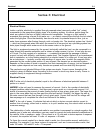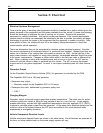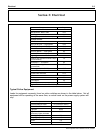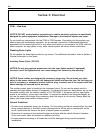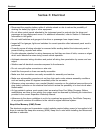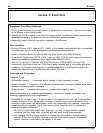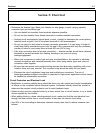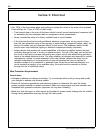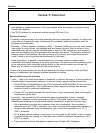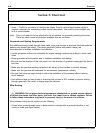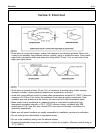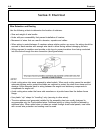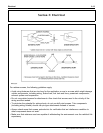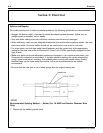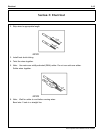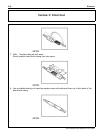
Electrical 2-9
Section 2: Electrical
• Use greased or sealed connectors in floor pan troughs which are subject to moisture coming
through the carpeting.
• Use XLPE insulation for uncovered runs that exceed 305 mm (12 in).
Electrical Protection
• Correctly route wires away from noise-generating wires or components. However, if routing near
noisy wires or plugging into noisy components is unavoidable, additional protection must be
designed into the harness.
• Shielding — Electro Magnetic Interference (EMI) — Consider shielding if you must route close to
high-current or noisy circuits. Use shielded wire and ground one side. Seal all splices in wire
assemblies that use bare coaxial shielding (braid or tape) for EMI suppression, and insulate or
tape over all shielding ends that terminate near any open connectors. This prevents splice and
terminal shorts to the shielding. Minimize the length of conductors which extend beyond the
shield. Failure to do this reduces the effectiveness of the shield.
• Spike suppression, in general, is accomplished by connecting a diode or resistor-diode
combination across the terminals of the noisy component. The diode should be sufficiently close
to the component (both electrically and physically) so that inductive spikes are clamped off.
Make sure the diode is connected with the correct polarity.
Correct routing and retention will reduce the likelihood of chafing or pinching. When this ideal
routing is unattainable, the following additional protection is needed:
Mechanical/Environmental Protection
• Tape — Tape is the most basic means of protection. It contains the wires in a loose bundle and
provides limited environmental protection. It does not protect against chafing and pinching.
— Kendall Polyken Fiberglass Base Tape (Ford Specification ESB-M3G38-A) is used for engine
compartment applications. This durable tape provides against cut-through and abrasion
commonly found in underhood applications.
— Polyken 267 is a substitute tape that may be used in lower temperature areas of the engine
compartment (apron area).
• Convolute - Use convolute for all underhood/underbody applications or when increased
temperature, abrasion or pinch resistance is required. Convoluted tubing comes in different
diameters and materials to accommodate different temperature ranges and harness sizes.
— Use polyethylene convolute when abrasion is the only consideration; this convolute is
adequate up to 96°C (205°F) maximum. Use nylon convolute when underhood/underbody or
abrasion and temperature are considerations; nylon convolute is adequate up to 177°C
(350°F) maximum.
— On all engine-mounted wiring or bend points, use vinyl tape on the outside of the convolute
to prevent wiring from looping out. This tape must be able to withstand temperatures 135°C
(275°F) or higher.
— Tape convolute junctions with abrasion-resistant tape (Polyken 267, fiberglass).
2010 Expedition SSV Modifiers Guide, 07/2009



